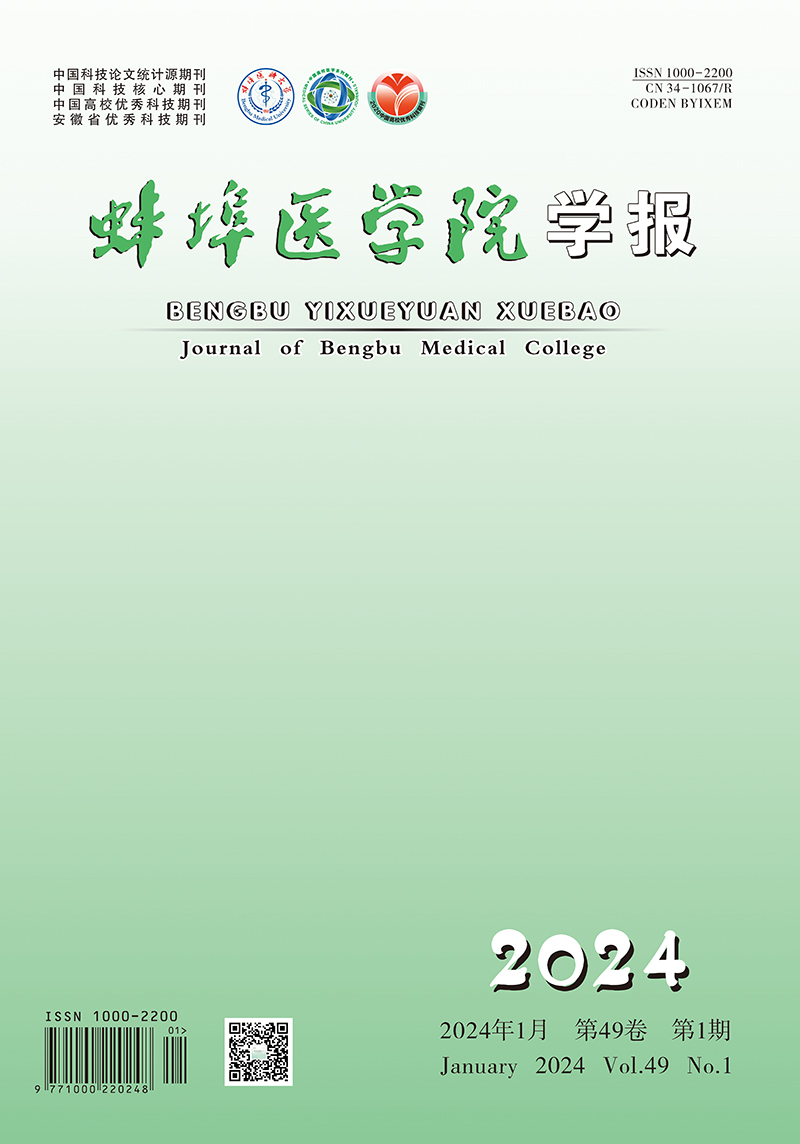-
高血压是导致心血管疾病的最常见的慢性病[1]。原发性高血压病人在持续高血压状态下,外周小动脉管腔痉挛,血管阻力上升,导致心脏收缩的后负荷持续增加,从而引起左心室增厚及重构[2]。高血压合并左心室肥厚不仅可能通过损害心肌应变影响心脏功能,还可通过干扰心肌收缩的协调,导致收缩效率降低而影响心脏功能。因此,早期、准确地评价原发性高血压病人左心室收缩功能对于临床诊断和治疗方案的制定具有重要价值。二维斑点追踪技术(2D-STI)角度无关且重复性好,可量化左心室应变、应变速率和左心室扭转,可通过测量这些指标来评估左心室功能[3]。本研究通过2D-STI技术早期评价原发性高血压病人左心室心肌各方向应变及同步性的改变,以期早期检出高血压病人左心室功能异常,为临床早期治疗干预提供决策支持。
HTML
-
选取2020年7月至2021年3月我院收治的原发性高血压病人48例,根据美国2015年《新版关于成人超声心动图心腔定量方法的建议》[4],女性左心室质量指数(LVMI)>88 g/m2、男性LVMI>102 g/m2定义为心肌肥厚,将入选高血压病人分为心肌肥厚组(LVH组)和非心肌肥厚组(NLVH组)。纳入标准:均符合中国高血压防治指南修订委员会制定的诊断标准[5],年龄≥18岁,左心室射血分数(LVEF)>52%。排除标准:继发性高血压、糖尿病、肝肾疾病、重大瓣膜疾病、先天性心脏病、心肌病和心肌运动异常者,以及图像质量差或不能配合本次检查者。同期选取年龄、性别匹配的健康体检成人22名作为对照组。本研究经我院医学伦理委员会批准通过,所有参与研究人员均签署知情同意书。
-
采用Philips EPIQ7C型彩色多普勒超声成像仪,S5-1探头,探头频率1.5~5.0 MHz,配备QLAB10.5分析软件。所有受试者均取左侧卧位,同步检测心电图,检查时要求屏住呼吸。由同一位经验丰富的超声医生在不知晓研究信息的情况下进行操作取图。根据美国超声心动图学会指南标准测量常规参数并观察有无节段性室壁运动异常;于胸骨旁左心室长轴切面测量左心房内径(LAD)、室间隔厚度(IVSd)、左心室舒张末期后壁厚度(LVPWd)、左心室舒张末期内径(LVIDd),采用在机软件测量获得左心室质量,计算LVMI。嘱受检者平静呼吸后屏气,采集并储存连续3个心动周期的标准胸骨旁二尖瓣水平、乳头肌水平和心尖水平左心室短轴切面及心尖三腔心、四腔心、二腔心切面的动态图像。超过2个左心室节段且图像质量较差的病人不纳入分析。利用QLAB软件中2D-STI技术测量获得左心室整体纵向峰值应变(GLS)、整体环周峰值应变(GCS)、整体径向峰值应变(GRS)、左室总旋转角度(LVtor)、纵向应变达峰时间离散度(LPSD)及环周应变达峰时间离散度(CPSD)。使用辛普森双平面法(Simpson′s)计算LVEF。
-
采用t检验、χ2检验和Pearson相关分析。
1.1. 研究对象
1.2. 方法
1.3. 统计学方法
-
受试者中排除2名图像质量不佳者,最终纳入NLVH组24例, LVH组24例, 对照组22例。3组年龄、性别、BMI间差异均无统计学意义(P>0.05);3组LVMI间差异有统计学意义(P<0.01),其中LVH组均明显高于NLVH组和对照组(P<0.01),NLVH组亦高于对照组(P<0.05);3组舒张压和收缩压间差异亦均有统计学意义(P<0.01),其中NLVH组和LVH组收缩压、舒张压均明显高于对照组(P<0.01)(见表 1)。
分组 n 年龄/岁 男 女 收缩压/mmHg 舒张压/mmHg BMI/(kg/m2) LVMI/(g/m2) 对照组 22 53.8±10.9 9 13 113.8±8.1 83.6±4.9 25.4±2.9 61.0±7.7 NLVH组 24 59.4±10.3 12 12 144.0±16.7** 93.2±7.6** 25.1±2.7 69.8±15.2* LVH组 24 58.1±11.3 13 11 140.4±12.5** 93.0±8.9** 23.4±2.7 107.1±10.7**## F — 1.66 0.84△ 36.26 12.48 034 102.27 P — >0.05 >0.05 <0.01 <0.01 >0.05 <0.01 MS组内 — 154.72 — 342.31 78.93 0.02 540.19 △示χ2值。q检验:与对照组比较*P<0.05,**P<0.01;与NLVH组比较##P<0.01 -
3组LVEF、舒张早期与晚期充盈期速度比值(E/A)间差异均无统计学意义(P>0.05);LVH组LAD、LVIDd、IVSd、LVPWd均明显高于对照组和NLVH组(P<0.01),NLVH组LAD和LVIDd亦均高于对照组(P<0.01和P<0.05)(见表 2)。
分组 n LVEF/% LAD/mm LVIDd/mm IVSd/mm LVPWd/mm E/A 对照组 22 64.3±3.0 34.6±1.8 47.9±2.9 8.5±0.9 8.1±0.67 0.90±0.34 NLVH组 24 63.0±3.3 36.8±2.4** 50.2±2.9* 8.8±0.9 8.2±1.1 0.88±0.28 LVH组 24 64.7±3.6 38.5±1.9**## 52.9±3.8**## 11.0±1.2**## 11.6±1.3**## 0.85±0.26 F — 1.71 20.68 13.76 42.70 82.55 0.17 P — >0.05 <0.01 <0.01 <0.01 <0.01 >0.05 MS组内 — 11.008 4.232 10.480 1.026 7.67 0.086 q检验:与对照组比较*P<0.05,**P<0.01;与NLVH组比较##P<0.01 -
3组GRS间差异无统计学意义(P>0.05),而其他各指标间差异均有统计学意义(P<0.05~P<0.01),其中LVH组GLS均明显低于NLVH组和对照组(P<0.01),NLVH组GLS亦均明显低于对照组(P<0.01);LVH组GCS、LVtor、LPSD、CPSD均明显高于NLVH组和对照组,NLVH组GCS、LVtor、LPSD亦均明显高于对照组(P<0.01)(见表 3)。高血病人与正常受检者左心室2D-STI图像见图 1。
分组 n GLS/% GRS/% GCS/% LVtor/% LPSD/ms CPSD/ms 对照组 22 22.3±1.6 42.1±8.0 22.4±3.2 10.7±1.5 27.3±12.4 27.7±11.7 NLVH组 24 20.7±1.7** 39.2±6.7 26.4±3.9** 16.2±2.2** 36.9±1.7** 28.3±9.5 LVH组 24 18.6±2.2**## 38.0±3.9 33.0±3.2**## 24.0±1.8**## 49.5±15.9**## 38.7±12.2**## F — 22.98 2.48 55.53 291.3 21.03 7.22 P — <0.01 >0.05 <0.01 <0.05 <0.01 <0.01 MS组内 — 3.456 40.691 11.946 3.56 135.971 124.982 q检验:与对照组比较*P<0.05,**P<0.01;与NLVH组比较#P<0.05,##P<0.01 -
Pearson相关分析显示,LVMI与GLS呈负相关关系(r=-0.577,P<0.01),与GCS、LVtor、LPSD、CPSD均呈正相关关系(r=0.682、0.818、0.635、0.393,P<0.01)。
2.1. 3组一般资料和LVMI比较
2.2. 各组常规超声心动图指标比较
2.3. 各组2D-STI指标比较
2.4. LVMI与相关超声指标的相关性分析
-
原发性高血压病人血压长期处于高水平状态,心肌后负荷增加,引起左室壁心肌逐渐增厚。有研究[6]显示,心肌肥厚是高血压病人发生心血管事件的重要风险因素之一。本研究结果显示,与对照组及NLVH组比较,LVH组LAD、LVIDd、IVSd、LVPWd均增大,提示长期高血压导致左心室后负荷增加,进而引起左心室肥厚、左心腔增大。而各组LVEF间差异无统计学意义,提示此时高血压病人LVEF正常,单纯地使用常规二维超声难以准确评价早期高血压病人左心室收缩功能的改变。
本研究应用2D-STI技术发现,对照组、NLVH组及LVH组的GLS依次递减,差异均有统计学意义,与既往研究[2, 7]一致;此外,对照组、NLVH组和LVH组GCS、LVtor依次递增,差异亦均有统计学意义。左心室心肌可分为内层纵向心肌、中层环周心肌和外层斜形心肌,纵行心肌引起的GLS在整体舒缩功能中起主要作用[2, 8],由于解剖关系,心内膜下动脉更容易受到压力过载的影响,对心肌间质纤维化、微循环障碍更敏感,易导致血供不足,影响收缩功能[9-11],因此,尽管NLVH组左室构型正常,但在长期心脏后负荷持续增高的状态下,冠状动脉痉挛,心肌局部缺血,心肌损伤,导致左心室GLS明显降低[2];当原发性高血压病人左室壁增厚时,细胞内钙离子浓度异常、纤维胶原大量堆积[12],心肌灌注进一步减少,左心室心肌进一步缺血和纤维化[13-14],从而导致左室GLS进一步降低。本研究结果显示,LVMI与GCS、LVtor均呈正相关关系,这可能是由于心内膜心肌损伤,心脏为了弥补因GLS减低而受损的收缩功能,继而引起中层和外层心肌收缩力增强,表现为GCS及LVtor的增大。
2D-STI另一个参数是达峰时间离散度(PSD),是由软件根据GLS、GCS测量自动计算对应的机械离散度LPSD及CPSD,用于评价心肌的同步性[15]。本研究结果显示,LVMI与LPSD呈正相关关系,与CPSD呈弱正相关关系,这可能是由于原发性高血压病人长期动脉血压增大,后负荷增大,导致左室肥厚,心肌电生理特性也发生改变,导致心肌兴奋-收缩偶联机制的失调,从而引起左心室收缩同步性降低。有研究[16]表明,高血压病人同型半胱氨酸的升高也可导致血管内皮细胞不同程度的受损,进一步加剧收缩的不同步;此外,还有研究[17]表明高血压与冠心病的发生具有相关关系,这些因素都可引起左心室收缩的不同步。左心室肥厚的病理生理变化又导致心肌组织异质性,最常见的是心肌不对称,肥厚的心肌的不对称性表现出明显的力学分散,从而解释了本研究中PSD的改变。除此之外,在左心室非同步化的动物模型中,收缩弥散还与电生理重构引起的心律失常有关[18]。对于本研究中正常LVEF病人,使用2D-STI技术可以敏感检出原发性高血压病人PSD变化,提示在常规二维超声心动图对左心室收缩同步性改变不敏感情况下,2D-STI可以检测到正常LVEF的原发性高血压病人左心室同步性改变,且诊断效能较高。
综上,2D-STI可早期敏感发现原发性高血压病人在LVEF正常时左心室应变及机械离散度的改变,从而为临床治疗高血压提供帮助,有助于预防高血压心血管事件的发生。








 DownLoad:
DownLoad: